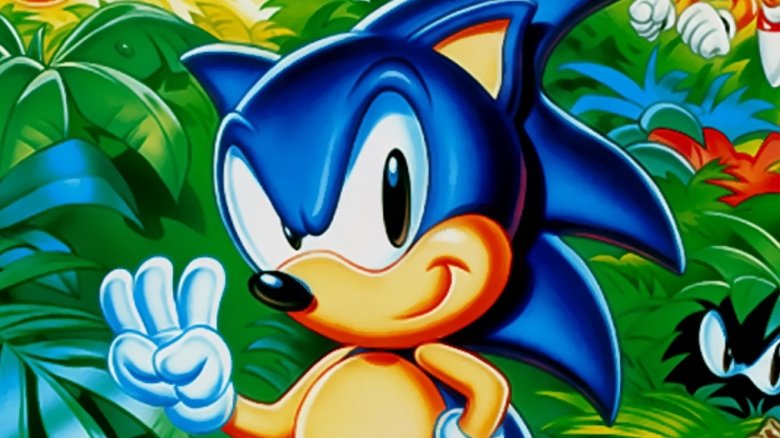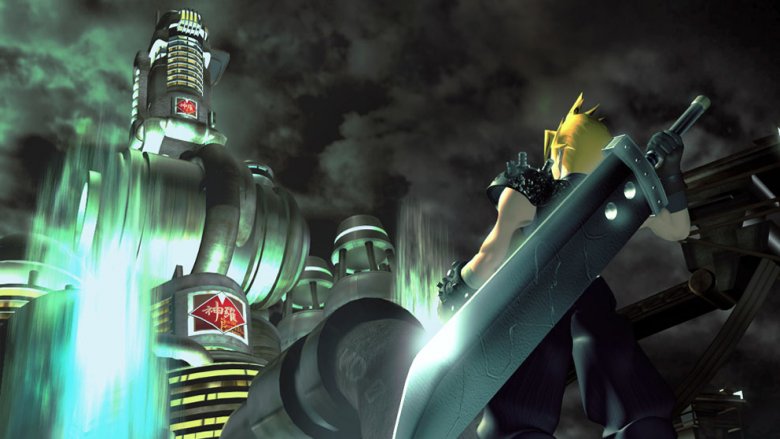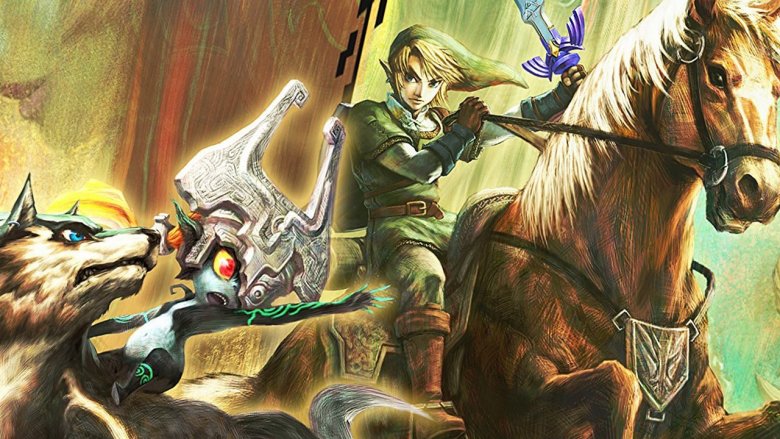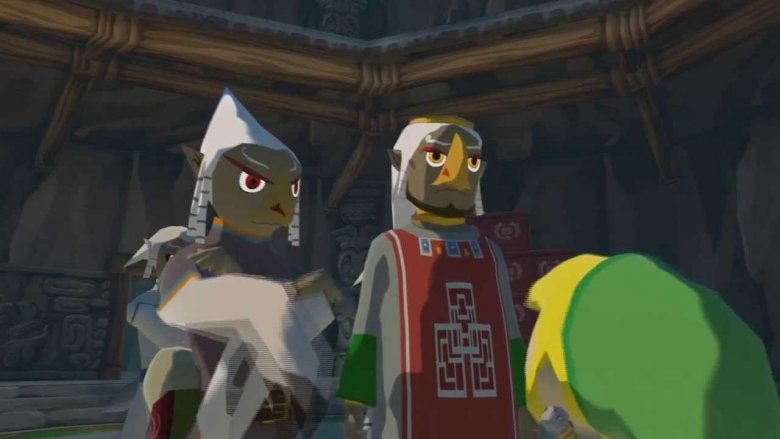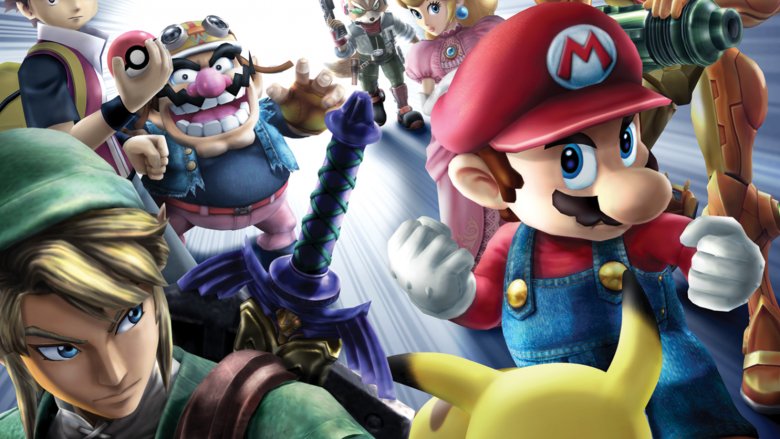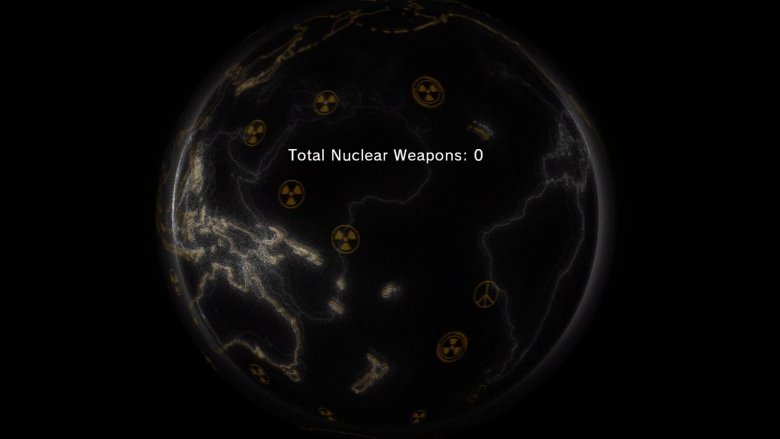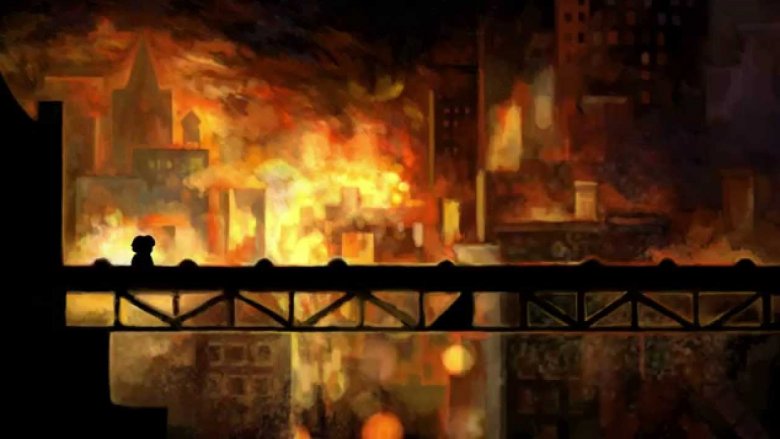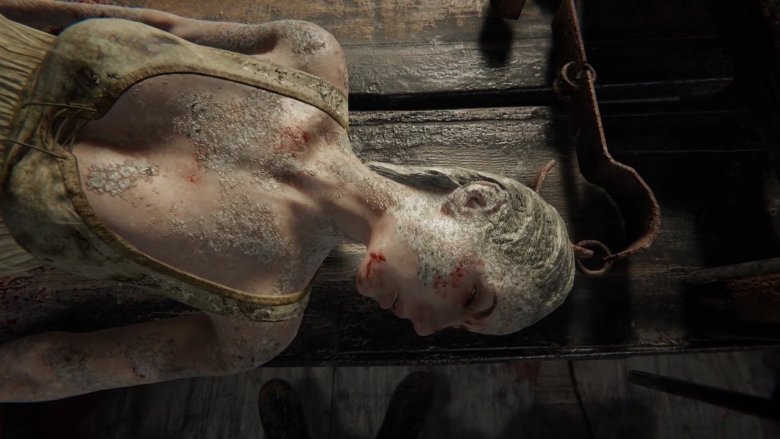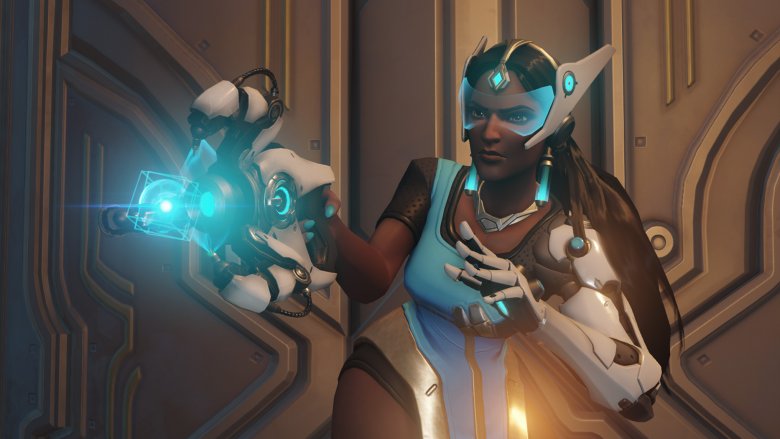Video Game Fan Theories The Studios Actually Confirmed
Fan theories can be the best part of a game. From the outlandish (is Crash Bandicoot actually Sonic the Hedgehog's cousin?) to the mundane (Uncharted takes place in a world that never had Indiana Jones movies), fan theories can get fans even more invested in their favorite games. And while many are debated ceaselessly on forum pages to no real conclusion, sometimes they're actually confirmed by the developers—and we've rounded up some of the most memorable examples.
The Shinra Corporation's secret origins
Final Fantasy is basically the video game equivalent to James Bond movies: genre-defining stories with consistent elements and an extremely loose continuity. The Final Fantasy franchise wrote the rules for nearly every element you picture when you think of an RPG, but while the series has branched out to other media, other game styles, and even other franchises like Disney's Kingdom Hearts games, the actual connectivity between games has always been limited.
Fans have theorized for years that any of the dozens of alternate universes are connected through magic or technology, but one of the most compelling examples is that Shinra, a supporting character in Final Fantasy X-2, eventually goes on to found the Shinra company, a mega-corporation that serves as the driving force for the plot of Final Fantasy VII.
Yoshinori Kitase, the director of Final Fantasy VII, obliquely confirmed this in an interview at Kotaku. "I won't completely come out and say that it is the same world," he cautioned. "However, Shinra in FFX-2 was created by [Kazushige] Nojima, the scenario writer, and when he thought him up, he thought it might be good if people would imagine that after a few years after the story of Final Fantasy X-2, that person Shinra will grow up and start the Shinra company. So that is something that he did hint in there."
Twilight Princess is a sequel to Majora's Mask
The Legend of Zelda games are fairly consistent in story and gameplay: Link must battle his way through the dungeons of Hyrule, acquiring the weapons and items necessary to destroy the evil Ganondorf and save Princess Zelda. The odd game out is definitely Majora's Mask, which does away entirely with Hyrule and Ganondorf, while Zelda appears only in a flashback. Many fans have rationalized the game's focus on a mysterious death-obsessed land (fittingly called Termina) by theorizing that it's some sort of other dimension, but still connected to the Hyrule universe in some way.
In Twilight Princess, there are hints that the game connects to Majora's Mask, despite the former game's restoration of the classic Hyrule-Ganondorf-Zelda paradigm. Multiple characters in Twilight Princess utilize design elements that reference the look of Majora's Mask, and a story element in Twilight Princess mentions that a villainous race, the Twili, were once banished to a mysterious Shadow Realm. Fans were convinced that this "shadow realm" was really Termina, directly connecting the two games and restoring Majora's Mask back into Zelda continuity.
The creators eventually confirmed the two games' connection in an official timeline of the various Zelda timelines/realities, showing Twilight Princess directly following Majora's Mask.
The Rito in The Wind Waker are descended from the Zora
Speaking of confusing Zelda timelines, a favorite theory of Legend of Zelda fans has been that the Zora (basically mermaid people in many games) are actually the primitive ancestors of the Rito species in The Legend of Zelda: The Wind Waker. Wind Waker technically takes place in a different timeline from both Twilight Princess and Majora's Mask, but its status as a standalone game was questioned by fans almost immediately.
The game seems, like Majora's Mask, to be almost willfully non-canonical, with a reimagining of both Link himself and the world around him. Still, attentive fans were convinced that the Rito (a race of bird people in Wind Waker) were actually an evolutionary descendent of the Zora, a classic Zelda race of fish people, thus tying Wind Waker to a larger Zelda timeline.
In the game, the Rito use a symbol very similar to the Zora's banners in previous games, and one character, Medii, mentions a bloodline that can be traced back to a Zora sage. That's all fans needed to theorize about how the evolution happened and how it affected the Zelda continuity as a whole—a theory confirmed in a Zelda box set which included a magazine full of character sketches and commentary on the various Zelda games.
"We created the Rito as the evolved form of the Zora that appeared in "Ocarina of Time" and the Korogs as what the Kokiri became once they left the forest," said series producer Eiji Aonuma. "They appear different, but they have inherited their blood."
Super Mario 3 is a play
Super Mario 3 is widely considered one of the greatest games of all time, and even if it wasn't, it's contributed a huge amount of characters and level design that would influence the next 20 years of Mario games.
It's strange, then, that so many fans were convinced for years that the game wasn't canon in the world of the Mario games. Fans argued instead that it was a play put on by the cast, with the player as the audience. The evidence is compelling—the start screen involves a red curtain raising, multiple aspects of the levels look like the kinds of backdrops one would normally see in stage productions, and when the levels end, Mario seems to exit Stage Right, wandering off into a black abyss that's no longer decorated.
Mario creator Sugeru Miyamoto actually confirmed this theory in a frankly adorable YouTube video where he answered fan questions about Mario. Now, how Chain-Chomps and Bowser's nine children escaped the fictional world of the stage play and made their way into the sequels, that's a question for further fan discussion.
The characters in Super Smash Bros. aren't the 'real' characters
The original Super Smash Bros. games aren't exactly heavy on lore; you could play as any of a couple dozen Nintendo characters as you battled it out with your friends and whined incessantly if one of them picked Pikachu. How these characters (many of whom are literally incapable of speech) were able to cross dimensions to battle each other on strange platforms was a question seemingly left for the player to answer.
Still, the focus on trophies and a blink-and-you'll-miss-it cutscene that showed a hand throwing a trophy in the air for it to transform into a 3-D fighting character made fans suspect that the games are actually just a dramatic representation of kids playing with toys. Even the final boss of every game involves a gloveless, armless hand attempting to knock the player character aside, turning them back into trophies, like a child bored of a game and deciding to start over.
Creator Satoru Iwata eventually confirmed this theory, stating that it wouldn't really be appropriate for the actual Mario to get in a fight with the actual Pikachu. By making the game about imaginary battles between Nintendo's most popular characters, the games can stay family-friendly.
Metal Gear V's nuclear secret
Hideo Kojima, creator of the beloved Metal Gear franchise, is known for being eccentric, teaching players not to take anything for granted. In past installments, this took the form of creatively challenging boss battles, requiring players to unplug controllers or not play the game for two weeks. In Metal Gear Solid V: The Phantom Pain, however, the mad genius of gaming outdid himself.
Fans knew from the release day that there were hidden secrets to unlock, with some even predicting an entire extra section available exclusively to players that managed to figure out what Kojima had planned. The actual hidden secret was an unlockable cutscene datamined from the game itself—the catch was that no one had any idea how to unlock it.
Fans did have one theory, though: that the cutscene was achievable only if every single player on the online multiplayer server got rid of their nukes. Nukes in online multiplayer were the strongest weapons in the game, ridiculously hard both to make and to destroy. To convince hundreds of thousands of players to voluntarily give up their best weapon seemed ludicrous—but Konami eventually confirmed the theory, and has even kept a running tally of the remaining nukes, categorized by system, on their Twitter feed.
Braid is about the atomic bomb
Braid is an indie platformer, and one of the first titles to really take advantage of the desire for retro gaming. A deliberate throwback to old school SNES and arcade games that willfully ignore player questions and desire to learn more about lore, it presents itself as a simple "rescue the princess"-style journey, with most of the backstory provided by the player.
Still, like those old-school games, Braid also hides a ridiculously difficult-to-achieve secret: by collecting the seven stars hidden in each level (there is no indication in the game itself that there are hidden stars to collect), players can unlock the secret ending. Oh, one more thing: one of the stars is only collectable by waiting on one screen for over TWO HOURS without pressing pause.
Once the secret ending is collected, the princess explodes after a famous Oppenheimer quote appears on the screen: "I am become death, destroyer of worlds." It sure seems Braid is implying that the player's quest for the princess was actually about a player's quest for nuclear armament, a decidedly dark turn for a seemingly simple platformer.
Jonathan Blow eventually confirmed this theory, sort of, by reaffirming that everything in the game is there for a reason when asked about the famous quote. "I'm not really talking that much about the story, but [that quote is] most certainly in there," he teased. "It's something to take into account when reading the text. But how much does it come into the actual story? It's a very tightly focused game, I spent three years working on details."
The baby isn't real in Outlast 2
Outlast 2 is a survival horror-game about Blake, an investigative journalist attempting to save his wife from a deranged cult who believes that she's pregnant with the Antichrist. The game frequently uses hallucinatory sequences to make the player as unsure of their reality as the cult followers are sure of theirs, all as mind control stations, shady corporations, and insane townfolk contribute to the game's ambiguous ending.
After escaping the cult, a newly pregnant Lynn gives birth to a child, cryptically says, "There's nothing there," and dies as Blake holds their child in his arms. Fans were convinced that the game was hinting that Blake ends the game as delusional as the evil cult leader, hallucinating the birth of his child while holding nothing but air. There's precedent in the series for this: in the previous game, players can read documents detailing the effects of psychosomatic pregnancies after being exposed to the mind control towers that are, of course, present in Outlast 2.
Like with other entries on this list, the developer's confirmation was subtle: a tweeted fan-art picture of Blake holding a baby with the line "There's nothing there." Without the context of the original scene, the line can't refer to anything else but the imaginary baby, which many fans saw as confirmation of their theory.
Symmetra is autistic in Overwatch
Overwatch is a game whose developers clearly care about showing a diverse set of playable characters, with a cast whose personalities and body types are as different from each other as the protagonists of the Call of Duty series are identical. Still, much of the game's lore and backstory are left largely to the player, with character interactions, level design, and occasional cinematics used to hint, rather than illustrate, at a character's intended reception.
Symmetra is an Indian architect who uses hard light technology, and a character that focuses on a daily order and has difficulty understanding other people's points of view. Many fans surmised that the character exhibited signs of autism to some degree, and a promotional comic by Andrew Robinson and Jeffrey "Chamba" Cruz seemed to support this reading, when Symmetra was mentioned as being "on the spectrum."
Director Jeff Kaplan later confirmed this theory, saying, "It's very astute of you to notice that she mentioned the spectrum in our comic... Symmetra is autistic. She is one of our most beloved heroes and we think she does a great job of representing just how awesome someone with autism can be."
Michael Jackson worked on Sonic the Hedgehog 3
For years, obsessive fans have been convinced that Michael Jackson worked on Sonic the Hedgehog 3, contributing music and sound design. The case they laid out was compelling—one fan even went so far as to combine background music from the games with actual Jackson releases to demonstrate how similar they were.
Somehow, after decades of searching and comparing clues, it was revealed by developers that Jackson did work on the game, although in a smaller capacity than many fans assumed. The exact reasons why his work was uncredited are unclear: one developer recalls that Jackson was unhappy with the sound quality of the technology, while others argue that SEGA wanted to distance themselves from Jackson due to the allegations of child molestation that were publicized at the time. Regardless, nearly every firsthand account of the game's development confirms that Jackson worked on Sonic the Hedgehog 3.

